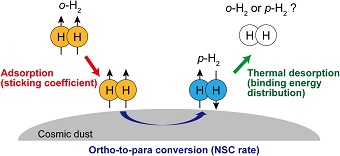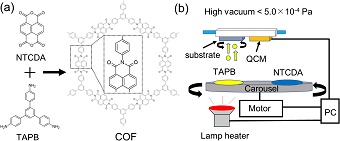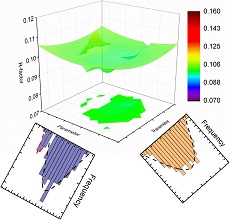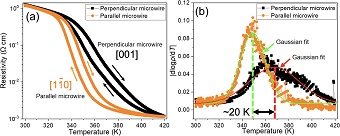Volume 66, Issue 7
Special Feature : Transactions of the Annual Meeting on the Japan Society of Vacuum and Surface Science 2022[I]
Displaying 1-16 of 16 articles from this issue
- |<
- <
- 1
- >
- >|
Preface
-
Article type: Preface
2023 Volume 66 Issue 7 Pages 375
Published: July 10, 2023
Released on J-STAGE: July 10, 2023
Download PDF (301K)
Special Feature : Transactions of the Annual Meeting on the Japan Society of Vacuum and Surface Science 2022[I]
-
Article type: Current Topics
2023 Volume 66 Issue 7 Pages 376-381
Published: July 10, 2023
Released on J-STAGE: July 10, 2023
Download PDF (6405K) -
Article type: Current Topics
2023 Volume 66 Issue 7 Pages 382-387
Published: July 10, 2023
Released on J-STAGE: July 10, 2023
Download PDF (1407K) -
Article type: Current Topics
2023 Volume 66 Issue 7 Pages 388-392
Published: July 10, 2023
Released on J-STAGE: July 10, 2023
Download PDF (3635K) -
Article type: Current Topics
2023 Volume 66 Issue 7 Pages 393-398
Published: July 10, 2023
Released on J-STAGE: July 10, 2023
Download PDF (3500K) -
Article type: Current Topics
2023 Volume 66 Issue 7 Pages 399-404
Published: July 10, 2023
Released on J-STAGE: July 10, 2023
Download PDF (3053K) -
 Article type: Current Topics
Article type: Current Topics
2023 Volume 66 Issue 7 Pages 405-410
Published: July 10, 2023
Released on J-STAGE: July 10, 2023
-
Article type: Current Topics
2023 Volume 66 Issue 7 Pages 411-415
Published: July 10, 2023
Released on J-STAGE: July 10, 2023
Download PDF (5245K)
Report
Conference Report
-
Article type: Report
2023 Volume 66 Issue 7 Pages 416
Published: July 10, 2023
Released on J-STAGE: July 10, 2023
Download PDF (692K)
Science Café
Award winner
-
Article type: Science Café
2023 Volume 66 Issue 7 Pages 417
Published: July 10, 2023
Released on J-STAGE: July 10, 2023
Download PDF (415K) -
Article type: Science Café
2023 Volume 66 Issue 7 Pages 418
Published: July 10, 2023
Released on J-STAGE: July 10, 2023
Download PDF (411K) -
Article type: Science Café
2023 Volume 66 Issue 7 Pages 419
Published: July 10, 2023
Released on J-STAGE: July 10, 2023
Download PDF (787K) -
Article type: Science Café
2023 Volume 66 Issue 7 Pages 420
Published: July 10, 2023
Released on J-STAGE: July 10, 2023
Download PDF (486K) -
Article type: Science Café
2023 Volume 66 Issue 7 Pages 421-422
Published: July 10, 2023
Released on J-STAGE: July 10, 2023
Download PDF (384K)
Diversity Promotion
-
Article type: Science Café
2023 Volume 66 Issue 7 Pages 423-425
Published: July 10, 2023
Released on J-STAGE: July 10, 2023
Download PDF (406K)
News & Trends
-
Article type: News & Trends
2023 Volume 66 Issue 7 Pages 426
Published: July 10, 2023
Released on J-STAGE: July 10, 2023
Download PDF (322K)
- |<
- <
- 1
- >
- >|







